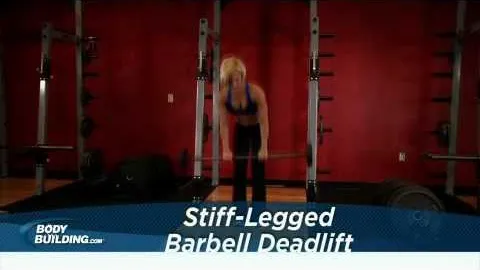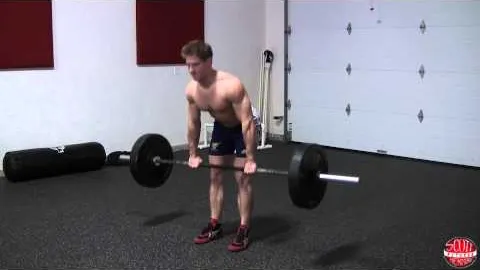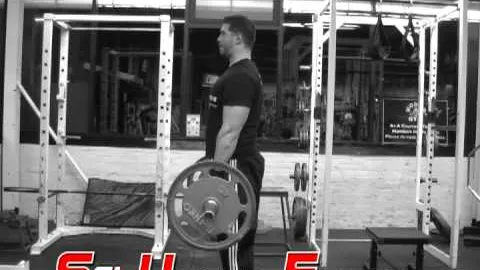


The stiff leg deadlift is a highly effective exercise that primarily targets the hamstrings and lower back muscles. It is a variation of the conventional deadlift that specifically focuses on developing strength and flexibility in the posterior chain.
Incorporating stiff leg deadlifts into your workout routine offers a multitude of benefits. Some of the key advantages of this exercise are:
Increased Hamstring Activation: Stiff leg deadlifts are renowned for their ability to target and strengthen the hamstrings. Regularly performing this exercise can lead to enhanced muscle development and improved hamstring function.
Improved Lower Back Strength: Stiff leg deadlifts place a significant emphasis on the lower back muscles, making them an excellent exercise for strengthening this area. By engaging the lower back during the movement, you can effectively develop core stability and reduce the risk of lower back injuries.
Enhanced Hip Flexibility: As the stiff leg deadlift requires a greater range of motion compared to traditional deadlifts, it can help improve hip flexibility. This increased hip mobility can translate into improved performance in other exercises and daily activities.
Greater Glute Activation: While hamstrings and lower back muscles are the primary targets of stiff leg deadlifts, the exercise also engages the glutes to a high degree. Consequently, incorporating this exercise into your routine can contribute to better glute development and improved overall lower body strength.
To maximize the effectiveness of the stiff leg deadlift exercise and reduce the risk of injury, it is essential to perform the movement with proper form. Here are the steps to follow when executing the exercise correctly:
Starting Position: Begin by standing with your feet shoulder-width apart and a slight bend in your knees. Hold a barbell with an overhand grip, hands positioned slightly wider than shoulder-width apart. Keep your spine straight and engage your core muscles.
The Descent: Maintaining a straight back, push your hips backward, allowing the barbell to lower towards the ground. Keep your legs relatively straight but not locked. Ensure that your knees remain slightly bent throughout the movement and focus on feeling the stretch in your hamstrings.
Hip Hinge: While descending, focus on hinging at the hips instead of bending at the waist. This will help engage the hamstrings and prevent excessive strain on the lower back.
Proper Bar Path: As you lower the barbell, keep it as close to your body as possible. Avoid letting it drift away from your legs, as this can compromise your form and increase the risk of injury.
The Ascent: Once you have reached the lowest position, begin the ascent by driving your hips forward and extending your knees until you are standing upright. Maintain a controlled and smooth motion throughout the entire movement.
To get the most out of your stiff leg deadlifts, consider implementing the following tips:
Start with Light Weights: If you are new to this exercise, begin with light weights to practice proper form and technique. Gradually increase the weight as you become more comfortable and confident in your abilities.
Engage Your Core Muscles: To maintain stability and protect your lower back, engage your core muscles throughout the movement. Imagine bracing your abs as if preparing for a light punch to the stomach.
Focus on the Eccentric Phase: The eccentric, or lowering, phase of the exercise is crucial for hamstring activation and development. Control the descent and focus on feeling the stretch in your hamstrings. Avoid using momentum or allowing the weight to pull your body down.
Consider Using a lifting belt: If you are lifting heavy weights or have a history of lower back issues, wearing a lifting belt can provide additional support and stability.
To ensure optimal results and minimize the risk of injury, be aware of the following common mistakes and avoid them when performing stiff leg deadlifts:
Rounding Your Lower Back: It is crucial to maintain a neutral spine throughout the exercise. Avoid rounding your lower back, as this can lead to strain and potential injury. Focus on keeping your core engaged and your back straight.
Locking Your Knees: While stiff leg deadlifts require relatively straight legs, it is essential to keep a slight bend in your knees. Locking your knees can put unnecessary stress on the joints and hinder proper muscle activation.
Using Excessive Weight: It is crucial to prioritize movement quality over the amount of weight lifted. Using excessive weight can compromise your form and increase the risk of injury. Focus on form, technique, and gradually progress with weight as you become stronger and more comfortable.
The stiff leg deadlift exercise is a valuable addition to any training program. By targeting the hamstrings, lower back, and glutes, it offers a wide range of benefits, including increased strength, flexibility, and muscle development. Incorporate this exercise into your routine, ensuring proper form and technique, and gradually increase the weight to reap the rewards of this highly effective movement.
If you're looking for a gym, fitness club or yoga studio, you've come to the right place.
You can find information about gyms in your area. Browse catalog of gyms and find gyms with classes which are you looking for.
On gym page you can find simple information like address, phone or website. You can find list of available classes. You can check availability of personal training or small group classes. On place page you can also see information about open hours.
You can find gyms near you with amenities, courts, studios and equipments.
Use our map to find gym at your city or district.
In Gym Navigator you can find list of exercises with movies for many body parts.
You can browse exercises catalog and find exercises the best of you.
You can also find exercises grouped into workout plans, which you can use to improve you body. Each routine show you exercises one by one and give you possibility to count you progress and count down rest time.